DOUGLAS GAYETON’S WORK focuses on inspiring people whose practices offer us a different way to look at food, agriculture and water. Their first-person accounts blend instructive observations with philosophical insights that explain how we can create a more regenerative, just, and nourishing food system. If you’d like to commission work by The Lexicon, go here.
ONE OF THE GREATEST CHALLENGES we face in creating a more regenerative, equitable food system is that most people don’t understand the most basic terms and principles that define the conversation.
Our theory of change starts with words. We explain a subject in its simplest terms, using words as building blocks to start a conversation. With words you can share ideas to go deeper and gain greater familiarity with a subject. You can give shape and substance to values, find points of commonality, build consensus, and finally shift perceptions to create behavior change.
Our process begins by identifying agents of change, then capturing their practices and principles with information artworks that use their own words to show who and what change looks like.
Our travels have taken us to urban gardens nestled between buildings in Queens, NY to look at urban farming, and aboard fishing trawlers in the Pacific to capture stories that explain how traceability can create greater transparency with our ocean fisheries. In Georgia we’ve learned how to make fast food more slow, and in Alabama we’ve seen that sometimes it only takes a slice of pie to create community. These dispatches capture a rapidly changing good food movement filled with inspiring people and aspirational stories. The change is happening everywhere and it’s happening now.
Illuminating the meaning behind these powerful ideas helps people pay closer attention to how they eat, what they buy and where their responsibility begins for creating a healthier, safer food system.
WE ONCE ASKED A SIXTH GENERATION FARMER to explain her definition of sustainability. Her answer was a single word: survivability. Whatever practices she adopted on her farm had to make economic sense for both her and her family.
The challenge we face in re-imagining our food system begins by taking into account that farms not only feed us, but they provide livelihoods, sometimes for entire communities. Can we develop new principles and practices that are good for farmers, for consumers and also good for the environment?
We’ve spent time with Colorado farmers operating farmstands supported by their neighbors, with taro growers in Hawaii and harvesters in Kansas wheatfields, at dairies in Vermont and poultry operations in New Hampshire. We’ve worked with farmers market operators in New Orleans and food hub coordinators in Virginia. The change these people see always follows the same formula: they envision a more just, regenerative world, set that as their north star, then start moving. While they all take different paths, the end point remains the same.
These journeys to forge a new food system come with a cost. It doesn’t matter how right an idea might seem, if it doesn’t make economic sense, it will wither and die.
A cattle rancher in San Juan Bautista, California explains that over the past 30 years the costs of doing business have kept going up while the revenue from managing his livestock have relatively flatlined, making it nearly impossible to raise pastured animals at a profit. The measurement he uses to explain his predicament? The Cow to Pickup Truck Index. The only hope for this rancher and others in his region is language. If consumers learn a few words, then connect them to key principles that distinguish one practice from another—pastured beef‑versus commodity cattle raised in CAFOs—then consumers are better able to support his more enlightened farming practices. That’s what change looks like. It’s slow and it happens one purchase and one consumer at a time.
In Iowa and Nebraska, farmers are learning that building healthier soil makes good economic sense. They’re adopting new practices, using cover crops and rotating what they grow. These approaches also allow them to use less water and reduce their need for fertilizers.
WHEN PEOPLE TALK ABOUT WATER, they often site a popular statistic: nearly 80% of the world’s freshwater use is devoted to agriculture. For farmers, this makes water stewardship critically important. As for the rest of us, most people couldn’t even name their local watershed. Water, like sewage treatment and electricity, has become mostly invisible. We don’t know much about our water, and that’s a problem, because while we don’t know where our water comes from, we’ll certainly miss it when it’s gone.
It takes water to grow our food, to grow the cotton used to make the clothes we wear, and in some cases to grow the corn that becomes the fuel that powers our cars. There’s a term for water that leaves the ground and the products it ends up in: virtual water. Simply put—there’s water embedded in everything around us.
Our work begins with hundreds of interviews with leading authorities in water use, including environmentalists, entrepreneurs, industry leaders, conservationists, water activists, and executives at public utilities. They help us establish an authoritative collection of the terms people use most when they talk about sustainable water use.
From this initial research, we’ve created a series of information-rich photographic collages that provide a graphical taxonomy of key water terms and principle. These artworks examine water use in the home and in the field, in industry and the environment. We help explain concepts like water footprints (a metric that calculates our total consumption of virtual water), show how much water it takes to grow an almond, describe how scientists measure point source pollution that runs off Iowa cornfields, dumping phosphorus and nitrogen into waterways (which eventually ends up in drinking water), and how adaptive agricultural practices can build healthy soils that retain more water for when its needed most.
We even depict innovate approaches like behavioral water efficiency that help consumers use less water, and in some cases show cautionary tales like that in the California town of East Porterville, which literally ran out of water, to remind us how we should all take greater care of this precious resource.
OUR ENERGY WORK BEGAN BY CHANCE. We were documenting amaranth producers in Oaxaca when we learned about a recent decision by the Mexican government to no longer build power lines connecting villages under a certain size (less than a hundred residents) to the country’s power grid. People in remote areas were suddenly faced with two options: either move or live without electricity. But some entrepreneurs recognized an opportunity. They developed small, economical solar panels perfectly suited for village use, so we traveled with them to a series of remote hillside villages six hours north of Oaxaca to see what happens when electricity is brought to a village for the first time.
Since then our energy work has taken us across the globe. In Sicily, we’ve documented what’s happened as rising fuel costs have led a rush to build alternate power sources on this Italian island. They’re finally reaching grid parity for the first time, with wind power now equalling and at times even surpassing the energy supply from fuel-burning conventional powerplants.
Hawaii faces challenges similar to those in Sicily. Islands must import the goods and services they can’t produce for themselves, which makes energy a costly resource. What Hawaii has is lots of rainfall, so examples of hydro-power projects abound across the islands, as well as initiatives to grow energy feedstocks with crops like jatropha and to even turn cooking grease into a renewable energy source.
In Israel and the Middle East we’ve documented a number of alternate energy sources, from generating jet fuel from castor beans and algae, to building solar panels directly into office windows that transform buildings into solar arrrays. We’ve also captured some of the largest solar power sites in the world, at Brightsource in the Negev desert, while in the US Pacific Northwest we’ve looked at how forests can be thinned and their biomass burned in combined heat and power plants to generate energy while producing biochar, a valuable soil amendment.
Still, we see our energy work as just beginning, and look forward to take a deeper look at how renewable principles can change the way we look at our energy use.
Follow our latest activities and learn more about how you can take part in your own community.
Our work depends on contributions by people like you. If you like what you see, you can support us here!
We’d love to hear from you! Contact us with general questions or media requests.
This website was built by The Lexicon™, a 501(c)(3) tax-exempt nonprofit organization headquartered in Petaluma, CA.
Check out our Privacy Policy, Cookie Policy, and Terms of Use.
© 2023 – The Lexicon™
This game was designed to raise awareness about the impacts our food choices have on our own health, but also the environment, climate change and the cultures in which we live.
First, you can choose one of the four global regions and pick a character that you want to play.
Each region has distinct cultural, economic, historical, and agricultural capacities to feed itself, and each character faces different challenges, such as varied access to food, higher or lower family income, and food literacy.
As you take your character through their day, select the choices you think they might make given their situation.
At the end of the day you will get a report on the impact of your food choices on five areas: health, healthcare, climate, environment and culture. Take some time to read through them. Now go back and try again. Can you make improvements in all five areas? Did one area score higher, but another score lower?
FOOD CHOICES FOR A HEALTHY PLANET will help you better understand how all these regions and characters’ particularities can influence our food choices, and how our food choices can impact our personal health, national healthcare, environment, climate, and culture. Let’s Play!
The FOOD CHOICES FOR A HEALTHY PLANET game allows users to experience the dramatic connections between food and climate in a unique and engaging way. The venue and the game set-up provides attendees with a fun experience, with a potential to add a new layer of storytelling about this topic.
Starting the game: the pilot version of the game features four country/regions: Each reflects a different way people (and the national dietary guidelines) look at diets: Nordic Countries (sustainability), Brazil (local and whole foods instead of ultra-processed foods); Canada (plant-forward), and Indonesia (developing countries).
Personalizing the game: players begin by choosing a country and then a character who they help in making food choices over the course of one day. Later versions may allow for creating custom avatars.
Making tough food choices: This interactive game for all ages shows how the food choices we make impact our health and the environment, and even contribute to climate change.
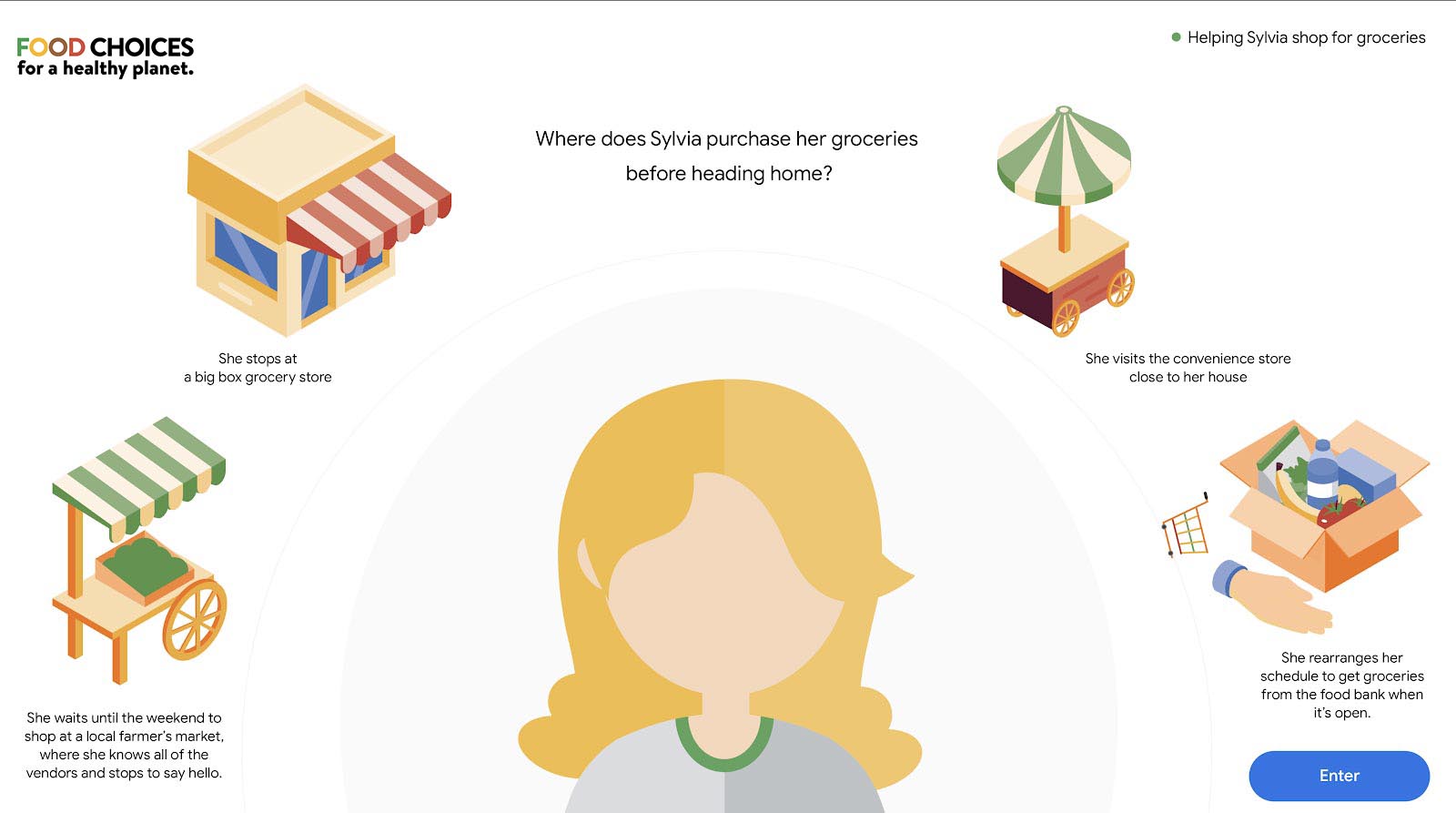
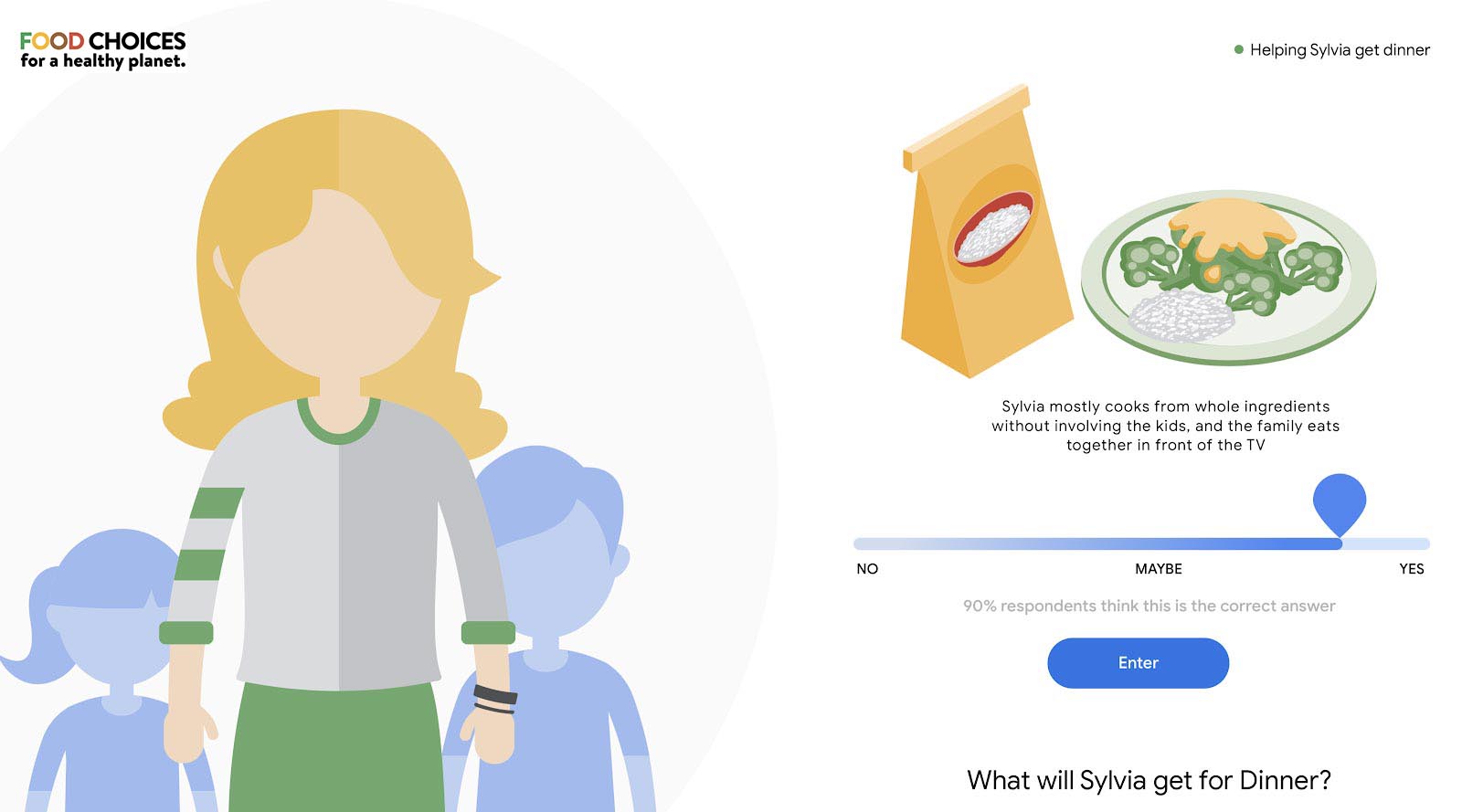
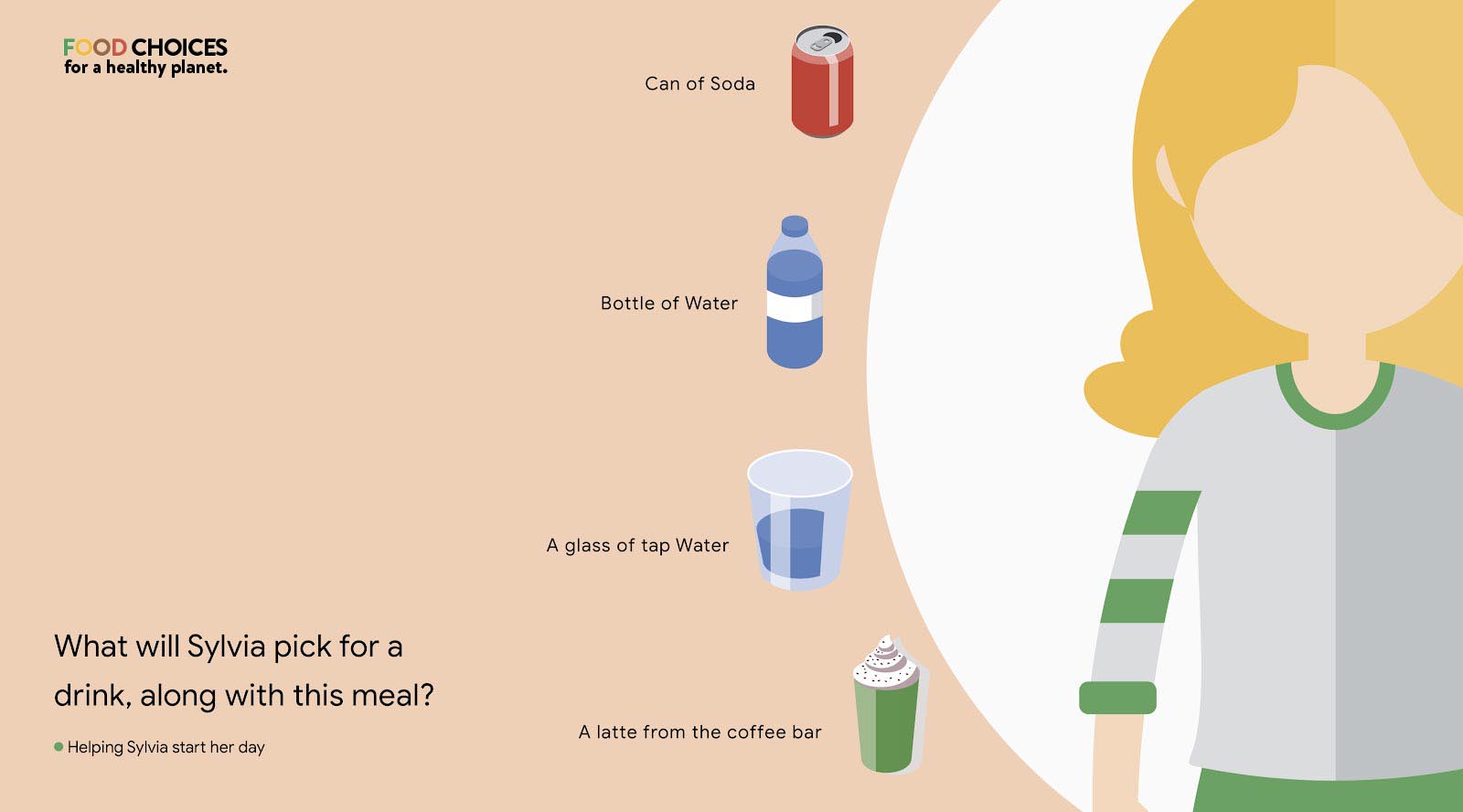
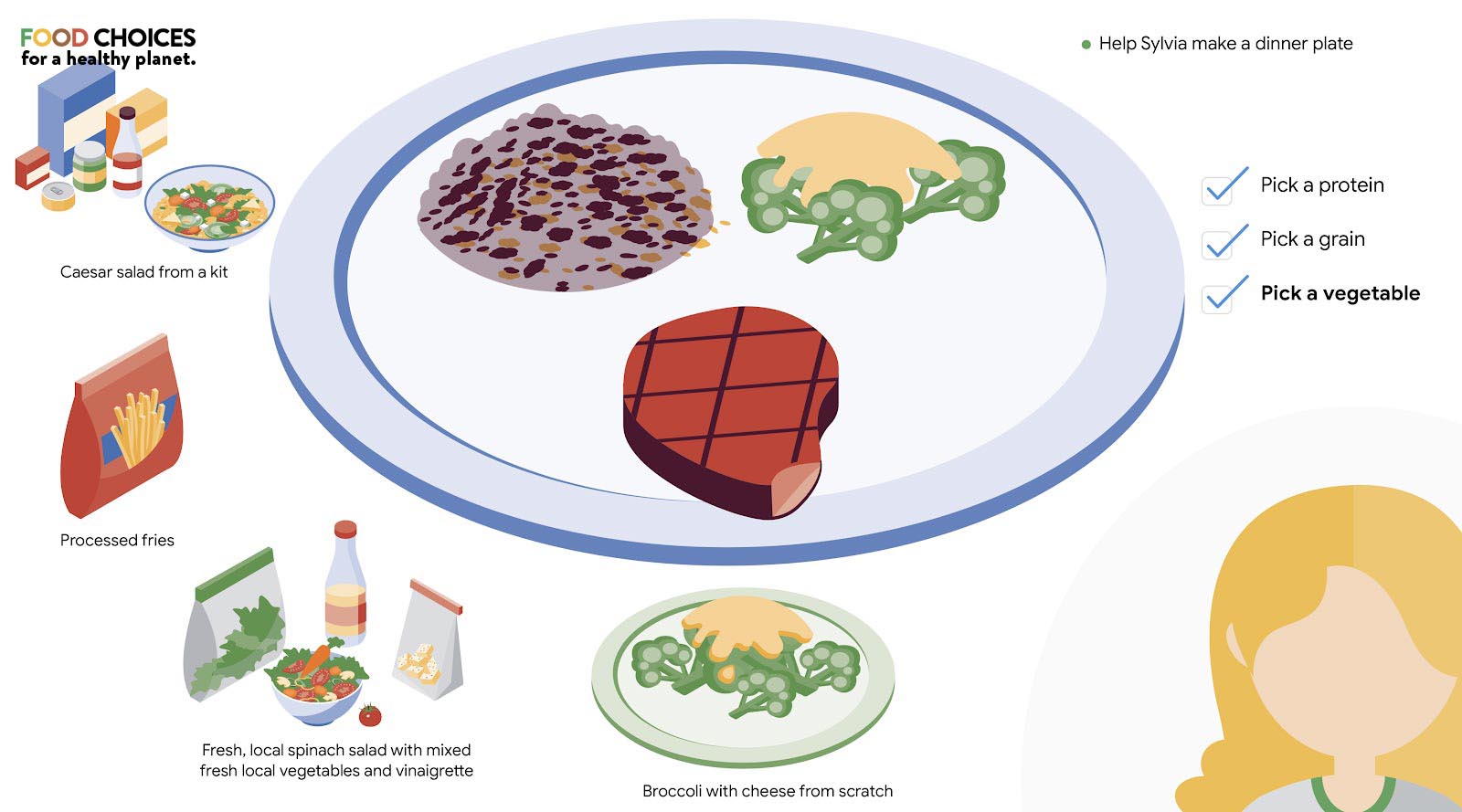
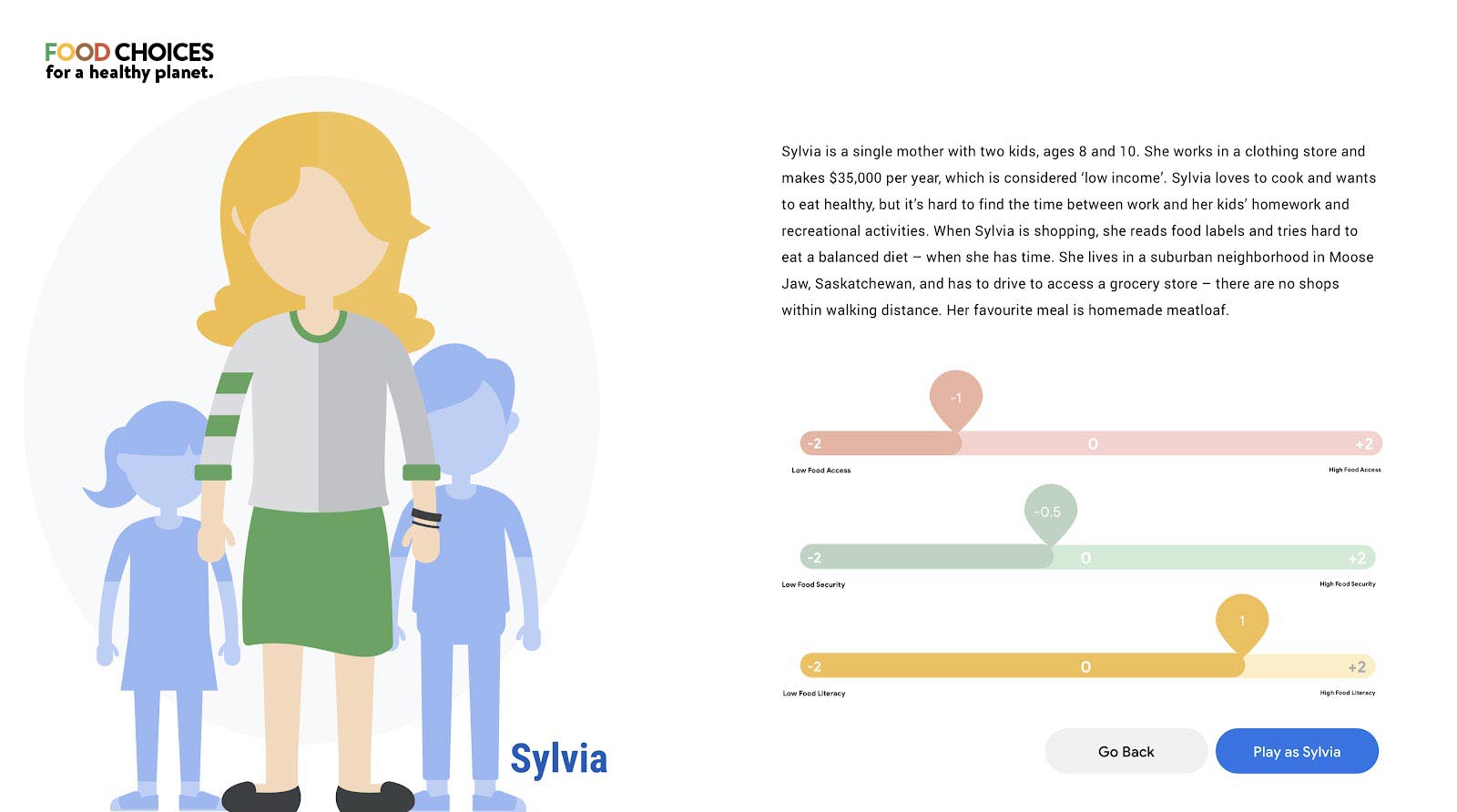
What we eat matters: at the end of each game, players learn that every decision they make impacts not only their health, but a national healthcare system, the environment, climate and even culture.
We’d love to know more about you and why you think you will be a great fit for this position! Shoot us an email introducing you and we’ll get back to you as soon as possible!
Providing best water quality conditions to ensure optimal living condition for growth, breeding and other physiological needs
Water quality is sourced from natural seawater with dependency on the tidal system. Water is treated to adjust pH and alkalinity before stocking.
Producers that own and manages the farm operating under small-scale farming model with limited input, investment which leads to low to medium production yield
All 1,149 of our farmers in both regencies are smallholder farmers who operate with low stocking density, traditional ponds, and no use of any other intensification technology.
Safe working conditions — cleanliness, lighting, equipment, paid overtime, hazard safety, etc. — happen when businesses conduct workplace safety audits and invest in the wellbeing of their employees
Company ensure implementation of safe working conditions by applying representative of workers to health and safety and conduct regular health and safety training. The practices are proven by ASIC standards’ implementation
Implementation of farming operations, management and trading that impact positively to community wellbeing and sustainable better way of living
The company works with local stakeholders and local governments to create support for farmers and the farming community in increasing resilience. Our farming community is empowered by local stakeholders continuously to maintain a long generation of farmers.
Freezing seafood rapidly when it is at peak freshness to ensure a higher quality and longer lasting product
Our harvests are immediately frozen with ice flakes in layers in cool boxes. Boxes are equipped with paper records and coding for traceability. We ensure that our harvests are processed with the utmost care at <-18 degrees Celsius.
Sourcing plant based ingredients, like soy, from producers that do not destroy forests to increase their growing area and produce fish feed ingredients
With adjacent locations to mangroves and coastal areas, our farmers and company are committed to no deforestation at any scale. Mangrove rehabilitation and replantation are conducted every year in collaboration with local authorities. Our farms are not established in protected habitats and have not resulted from deforestation activity since the beginning of our establishment.
Implement only natural feeds grown in water for aquatic animal’s feed without use of commercial feed
Our black tiger shrimps are not fed using commercial feed. The system is zero input and depends fully on natural feed grown in the pond. Our farmers use organic fertilizer and probiotics to enhance the water quality.
Enhance biodiversity through integration of nature conservation and food production without negative impact to surrounding ecosysytem
As our practices are natural, organic, and zero input, farms coexist with surrounding biodiversity which increases the volume of polyculture and mangrove coverage area. Farmers’ groups, along with the company, conduct regular benthic assessments, river cleaning, and mangrove planting.
THE TERM “MOONSHOT” IS OFTEN USED TO DESCRIBE an initiative that goes beyond the confines of the present by transforming our greatest aspirations into reality, but the story of a moonshot isn’t that of a single rocket. In fact, the Apollo program that put Neil Armstrong on the moon was actually preceded by the Gemini program, which in a two-year span rapidly put ten rockets into space. This “accelerated” process — with a new mission nearly every 2-3 months — allowed NASA to rapidly iterate, validate their findings and learn from their mistakes. Telemetry. Propulsion. Re-entry. Each mission helped NASA build and test a new piece of the puzzle.
The program also had its fair share of creative challenges, especially at the outset, as the urgency of the task at hand required that the roadmap for getting to the moon be written in parallel with the rapid pace of Gemini missions. Through it all, the NASA teams never lost sight of their ultimate goal, and the teams finally aligned on their shared responsibilities. Within three years of Gemini’s conclusion, a man did walk on the moon.
FACT is a food systems solutions activator that assesses the current food landscape, engages with key influencers, identifies trends, surveys innovative work and creates greater visibility for ideas and practices with the potential to shift key food and agricultural paradigms.
Each activator focuses on a single moonshot; instead of producing white papers, policy briefs or peer-reviewed articles, these teams design and implement blueprints for action. At the end of each activator, their work is released to the public and open-sourced.
As with any rapid iteration process, many of our activators re-assess their initial plans and pivot to address new challenges along the way. Still, one thing has remained constant: their conviction that by working together and pooling their knowledge and resources, they can create a multiplier effect to more rapidly activate change.
Co-Founder
THE LEXICON
Vice President
Global Workplace Programs
GOOGLE
Who can enter and how selections are made.
A Greener Blue is a global call to action that is open to individuals and teams from all over the world. Below is a non-exhaustive list of subjects the initiative targets.
To apply, prospective participants will need to fill out the form on the website, by filling out each part of it. Applications left incomplete or containing information that is not complete enough will receive a low score and have less chance of being admitted to the storytelling lab.
Nonprofit organizations, communities of fishers and fish farmers and companies that are seeking a closer partnership or special support can also apply by contacting hello@thelexicon.org and interacting with the members of our team.
Special attention will be given to the section of the form regarding the stories that the applicants want to tell and the reasons for participating. All proposals for stories regarding small-scale or artisanal fishers or aquaculturists, communities of artisanal fishers or aquaculturists, and workers in different steps of the seafood value chain will be considered.
Stories should show the important role that these figures play in building a more sustainable seafood system. To help with this narrative, the initiative has identified 10 principles that define a more sustainable seafood system. These can be viewed on the initiative’s website and they state:
Seafood is sustainable when:
Proposed stories should show one or more of these principles in practice.
Applications are open from the 28th of June to the 15th of August 2022. There will be 50 selected applicants who will be granted access to The Lexicon’s Total Storytelling Lab. These 50 applicants will be asked to accept and sign a learning agreement and acceptance of participation document with which they agree to respect The Lexicon’s code of conduct.
The first part of the lab will take place online between August the 22nd and August the 26th and focus on training participants on the foundation of storytelling, supporting them to create a production plan, and aligning all of them around a shared vision.
Based on their motivation, quality of the story, geography, and participation in the online Lab, a selected group of participants will be gifted a GoPro camera offered to the program by GoPro For A Change. Participants who are selected to receive the GoPro camera will need to sign an acceptance and usage agreement.
The second part of the Storytelling Lab will consist of a production period in which each participant will be supported in the production of their own story. This period goes from August 26th to October 13th. Each participant will have the opportunity to access special mentorship from an international network of storytellers and seafood experts who will help them build their story. The Lexicon also provides editors, animators, and graphic designers to support participants with more technical skills.
The final deadline to submit the stories is the 14th of October. Participants will be able to both submit complete edited stories, or footage accompanied by a storyboard to be assembled by The Lexicon’s team.
All applicants who will exhibit conduct and behavior that is contrary to The Lexicon’s code of conduct will be automatically disqualified. This includes applicants proposing stories that openly discriminate against a social or ethnic group, advocate for a political group, incite violence against any group, or incite to commit crimes of any kind.
All submissions must be the entrant’s original work. Submissions must not infringe upon the trademark, copyright, moral rights, intellectual rights, or rights of privacy of any entity or person.
Participants will retain the copyrights to their work while also granting access to The Lexicon and the other partners of the initiative to share their contributions as part of A Greener Blue Global Storytelling Initiative.
If a potential selected applicant cannot be reached by the team of the Initiative within three (3) working days, using the contact information provided at the time of entry, or if the communication is returned as undeliverable, that potential participant shall forfeit.
Selected applicants will be granted access to an advanced Storytelling Lab taught and facilitated by Douglas Gayeton, award-winning storyteller and information architect, co-founder of The Lexicon. In this course, participants will learn new techniques that will improve their storytelling skills and be able to better communicate their work with a global audience. This skill includes (but is not limited to) how to build a production plan for a documentary, how to find and interact with subjects, and how to shoot a short documentary.
Twenty of the participants will receive a GoPro Hero 11 Digital Video and Audio Cameras by September 15, 2022. Additional participants may receive GoPro Digital Video and Audio Cameras to be announced at a later date. The recipients will be selected by advisors to the program and will be based on selection criteria (see below) on proposals by Storytelling Lab participants. The selections will keep in accordance with Lab criteria concerning geography, active participation in the Storytelling Lab and commitment to the creation of a story for the Initiative, a GoPro Camera to use to complete the storytelling lab and document their story. These recipients will be asked to sign an acceptance letter with terms of use and condition to receive the camera.
The Lexicon provides video editors, graphic designers, and animators to support the participants to complete their stories.
The submitted stories will be showcased during international and local events, starting from the closing event of the International Year of Fisheries and Aquaculture 2022 in Rome, in January 2023. The authors of the stories will be credited and may be invited to join.
Storytelling lab participation:
Applicants that will be granted access to the storytelling Lab will be evaluated based on the entries they provided in the online form, and in particular:
Applications will be evaluated by a team of 4 judges from The Lexicon, GSSI and the team of IYAFA (Selection committee).
When selecting applications, the call promoters may request additional documentation or interviews both for the purpose of verifying compliance with eligibility requirements and to facilitate proposal evaluation.
Camera recipients:
Participants to the Storytelling Lab who will be given a GoPro camera will be selected based on:
The evaluation will be carried out by a team of 4 judges from The Lexicon, GSSI and the team of IYAFA (Selection committee).
Incidental expenses and all other costs and expenses which are not specifically listed in these Official Rules but which may be associated with the acceptance, receipt and use of the Storytelling Lab and the camera are solely the responsibility of the respective participants and are not covered by The Lexicon or any of the A Greener Blue partners.
All participants who receive a Camera are required to sign an agreement allowing GoPro for a Cause, The Lexicon and GSSI to utilize the films for A Greener Blue and their promotional purposes. All participants will be required to an agreement to upload their footage into the shared drive of The Lexicon and make the stories, films and images available for The Lexicon and the promoting partners of A Greener Blue.